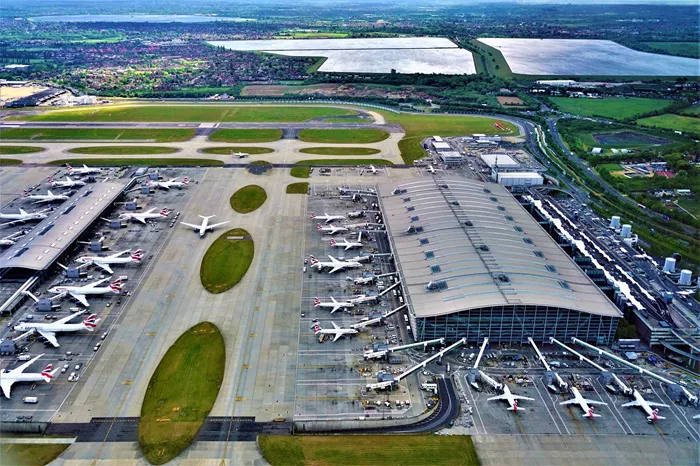London, a global hub for business and tourism, is served by six major airports: Heathrow, Gatwick, Stansted, Luton, London City, and Southend. Each airport caters to different traveler needs, from luxury amenities to budget-friendly convenience. This guide compares these airports based on location, transport links, facilities, airlines, and passenger experience to determine which is the “best” for your journey.
1. Heathrow Airport (LHR): The Global Giant
Overview
As the UK’s busiest airport and Europe’s second-busiest, Heathrow is London’s primary international gateway. With four terminals (plus Terminal 5’s iconic design), it connects to over 200 destinations worldwide.
Strengths
Global connectivity: Major hub for long-haul flights (e.g., British Airways, Virgin Atlantic).
Luxury amenities: Premium lounges, designer shopping (Harrods, Rolex), and fine dining (Gordon Ramsay’s Plane Food).
Transport links: Direct Elizabeth Line and Piccadilly Line access to Central London (30–45 mins).
Weaknesses
Crowds: Over 80 million annual passengers mean queues and congestion.
Costs: Expensive parking and pricier flights compared to budget airports.
Best for: International travelers, business class passengers, and those prioritizing convenience.
2. Gatwick Airport (LGW): The Leisure Hub
Overview
Gatwick, London’s second-largest airport, focuses on leisure travel and short-haul European routes. Its two terminals serve airlines like easyJet and TUI.
Strengths
Efficiency: Faster security queues than Heathrow.
Southern access: Ideal for travelers to Surrey, Sussex, or Brighton.
Family-friendly: Dedicated play areas and affordable dining.
Weaknesses
Limited long-haul: Fewer global destinations than Heathrow.
Transport delays: The Gatwick Express train is reliable but pricier than Thameslink.
Best for: Families, budget European travel, and South England residents.
3. London City Airport (LCY): The Business Traveler’s Oasis
Overview
Nestled in the Royal Docks, London City Airport offers unmatched proximity to Central London (22 mins via DLR). Its single terminal caters to short-haul business routes.
Strengths
Speed: 20-minute check-in-to-gate time.
City access: Minutes from Canary Wharf and the Square Mile.
Luxury simplicity: Quiet terminals and upscale lounges.
Weaknesses
Limited routes: Serves mainly European business cities (e.g., Frankfurt, Zurich).
No long-haul: Small runways restrict aircraft size.
Best for: Business travelers and those valuing time over cost.
4. Stansted (STN) and Luton (LTN): Budget Champions
Stansted’s Strengths
Ryanair’s base: Ultra-cheap flights across Europe.
Modern terminal: Despite crowds, facilities are clean and efficient.
Stansted’s Weaknesses
Distance: 50 mins from London by train.
Chaotic queues: Peak times overwhelm security.
Luton’s Strengths
EasyJet and Wizz Air hubs: Competitive fares.
Quicker expansion: Recent upgrades improve passenger flow.
Luton’s Weaknesses
Transport hassles: Requires a shuttle bus to the train station.
Basic amenities: Fewer dining/shopping options.
Best for: Backpackers, students, and cost-conscious travelers.
5. Southend Airport (SEN): The Underdog
Overview
London’s smallest airport, Southend, offers a stress-free alternative but with very limited routes (mostly UK and EU).
Strengths
No queues: Relaxed security and boarding.
Rail link: Direct trains to Liverpool Street (55 mins).
Weaknesses
Few destinations: Served only by budget carrier easyJet.
Remote location: Far from London’s core.
Best for: Essex residents or travelers seeking simplicity.
Conclusion
The “best” London airport depends on your priorities:
Heathrow: Unbeatable global reach.
Gatwick: Balanced leisure travel.
London City: Business efficiency.
Stansted/Luton: Budget wins.
Southend: Niche convenience.
For most international travelers, Heathrow remains the top choice for its seamless connectivity and premium services. However, London City Airport is a strong contender for business flyers, while Gatwick strikes a perfect balance for families and European vacations.

